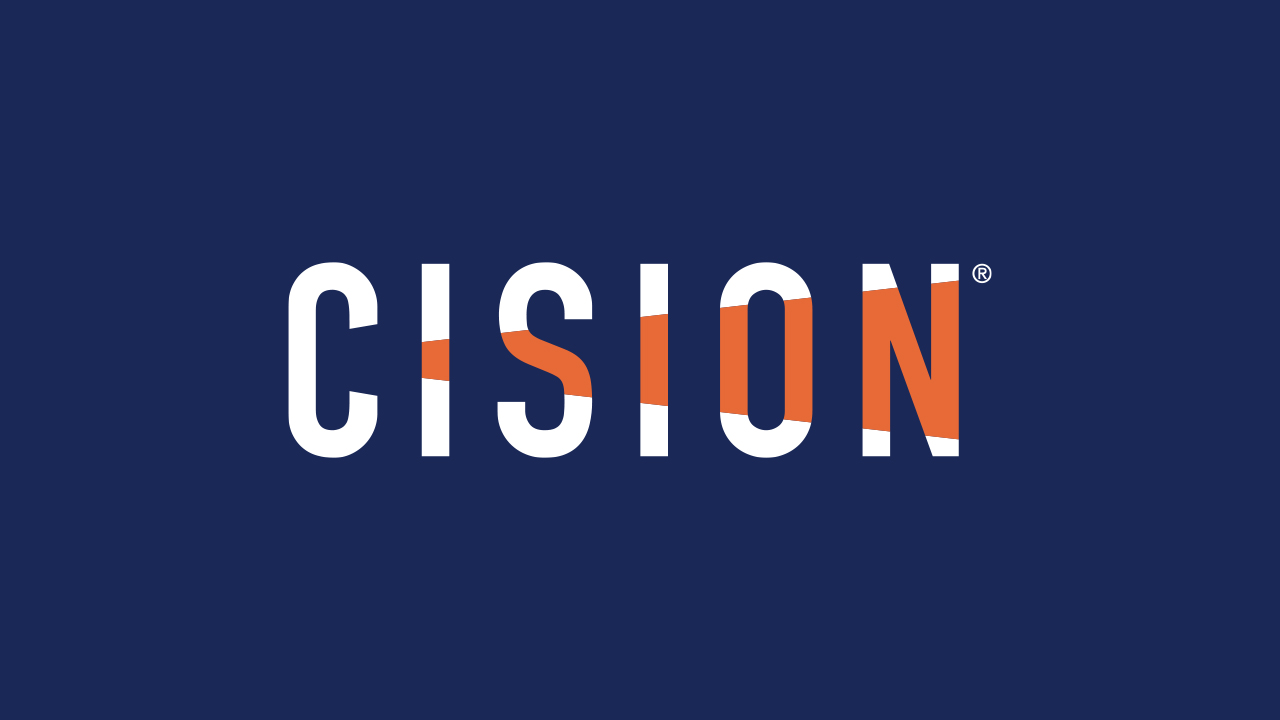Market research tools are essential for businesses seeking to gain a competitive advantage and understand their audience better. They help provide valuable insights into consumer behavior, market trends, and the competitive environment, so you can achieve your goals more easily.
Whether you're a start-up or a global retailer, conducting market research is central to your success.
Most organizations use online market research tools to strategize campaigns, implement decisions, and monitor the response in one place. Having a single market research platform means you can streamline workflows and onboard colleagues more easily, so that you're working in unison.
This guide will take you through the top market research tools available to users of all kinds. See why analyzing website traffic, gathering audience insights, understanding industry movements, and tracking your competitors can help create a bullet-proof strategy.
The best market research tools vary in functionality, from competitive intelligence gathering to usability testing. Each is designed to meet distinct research needs. They offer a range of features such as creating surveys, data visualization, SEO analysis, and social media monitoring.
Of course, investing in the right market research tool is not merely an operational decision; it's a strategic move towards data-driven decision-making. With the extensive options available, from free market research tools to paid solutions, you can find a platform that fits your budget and meets your specific research requirements.
It's all about leveraging the latest technologies to unlock actionable insights that can propel your brand or business forward.
Overview of Market Research
Before we look at the best market research tools, it's important to define what market research actually is and the core aspects of it.
When you engage in market research, your primary goal is to garner valuable insights into your target market, uncover market and industry trends, and assess economic patterns. Market research allow you to paint a clear picture of your industry and audience.
This process involves collecting and analyzing market data––from consumer insights to tech advancements––to make better business decisions.
Market Research Definition
Purpose: To understand consumer behavior and market trends, and identify market opportunities.
Process: Gathering data points from various sources to visualize data and obtain a holistic view of the market landscape.
Core Aspects of Market Research
By outlining our definition of market research, we can now look at what this means in practice. Below are three main aspects to market research:
Conducting Research
You can't act on research until you do it. Tasks involved in conducting effective market research include:
Identifying the key parameters for data collection.
Utilizing appropriate market research tools to gather both qualitative and quantitative data.
Outlining your KPIs in order to target useful data points.
Coordinating a team to ensure everyone is working together on the same objectives.
You might use your research to identify an audience, or spot a gap in the market. Perhaps you feel there is opportunity for growth but aren't sure how to pivot your brand. Conducting market research is the first step in this mission.
Gaining Market Insights
Your market insights are what drives your research and provides you with a strong overview of a market. These insights can be split into two categories:
Direct and Indirect Sources: Customer feedback, in app surveys, focus groups, sales patterns, social media activity.
Background Analysis: Interpreting complex data to discern trends and predict future market movements.
By combining data obtained through your direct and indirect sources with background analysis, it's possible to generate a truthful, actionable overview of a market and your position within it.
Understanding Economic Data
It's important to stay across the economic impact of market research as you go along. Outline your budget for paid software, and consider supplementing your strategy with free market research tools.
If your research shows a gap in the market that requires investment to exploit, then you need to be able to predict your financial situation before pushing ahead.
Identifying a Target Audience
As we mentioned above, most organizations use market research to better understand their audience. The logic goes that once you know your customers, you can give them what they want time and again.
However, if you're starting from scratch or are seeking a new target market then you'll need to begin by identifying your audience.
This is the specific group of consumers most likely to want your product or service, and therefore, the group you should focus your marketing efforts on targeting.
First, consider the demographics your product or service appeals to.
Target Audience Demographics
Age
Gender
Location
Education
Socioeconomic status
Next, analyze consumer behavior and preferences to gain deeper audience insights. This involves looking at how your customers make choices and what influences their purchasing decisions. Using a tool like Brandwatch, for example, allows you to monitor social media users and understand their habits better.
Identify Your Target Audience
Here's a brief overview of steps to identify your audience:
Segment your market: Break down the larger market into smaller categories based on shared characteristics. For example, your baby clothes brand wants to zone in on parents and grandparents specifically.
Assess consumer behavior: Examine how these segments interact with your category of product or service. Do parents and grandparents positively engage with your baby clothes brand?
Survey consumer preferences: Find out what each segment values and how they prioritize their needs. Is speed of delivery, quality of products, or responsiveness of customer service the big issue for customers?
Compile audience insights: Use the collected data to form a comprehensive profile of your most valuable consumers. Here's where market research software comes in.
Market Research Tools and Software
There are a lot of market research tools out there. Some offer the whole spectrum of research options, while others are more specialized.
Here's what to look for in a market research platform and some popular options:
User Experience and Usability Testing
A crucial aspect of market research is user experience testing. Platforms like Loop11 allow you to conduct both moderated and unmoderated usability tests, ensuring that your website or product resonates well with your target audience.
If your website's UX scores poorly then this might be why your brand is struggling.
SEO and Content Strategy
Tools such as Ahrefs offer in-depth keyword analysis and competitive insights for an impeccable SEO and content strategy. SEO tools primarily focus on SERP marketing but bleed into wider marketing functions too. They provide a broad suite of tools for conversion rate optimization, making them the top choice for SEO experts.
Survey Tools
When it comes to gathering data, survey creation tools with pre-built survey templates play a pivotal role. They serve as an efficient means to deploy market research surveys, enabling you to collect feedback swiftly and systematically. GWI is a simple solution for surveying that offers quick, actionable results.
Social Media and Trend Analysis
Tools like Brandwatch specialize in social media monitoring, allowing you to keep a pulse on your brand's online presence. For trend analysis, Google Trends remains an indispensable, free market research tool, providing insights into the popularity of search queries across various regions and languages. Combined, you can see what's trending and what people are talking about, and feed this data into your market analysis.
News Analysis
Being able to monitor traditional news sources like TV, newspapers, and radio is just as important as tracking online trends. CisionOne's powerful media monitoring tool collects consumer insights from millions of pieces of content each year, giving users the best overall visualization of their market.
Choosing Free and Paid Market Research Tools
Most market research tools offer a free period for trial testing before turning into paid platforms. It's important to remember that these are powerful tools that cost a lot of money to run smoothly, and a tool's prices will usually scale to match your needs.
Money shouldn't be the only factor when deciding whether to choose a free or paid-for market research tool. Here are some things to consider:
Free Market Research Tools
Pros:
Cost-Effective: Ideal if you're on a tight budget or are just starting up and want to experiment without a fee. Free tools provide basic insights without the financial commitment.
Accessibility: Free tools are readily available for anyone to use, making them a valuable free resource for preliminary research.
Ease of Use: Free tools often feature user-friendly interfaces, suitable for those new to market research. After all, you might be using one for the first time.
Cons:
Limited Features: The data and analytics provided are often basic, potentially impacting the depth of your insights.
Less Customization: Free tools may not offer the tailored options that a specialized or advanced project might require.
Paid Market Research Tools
Pros:
Comprehensive Data: They typically offer a broader and more in-depth range of data, which can be crucial for complex analysis.
Advanced Features: With a paid tool, you often get access to more sophisticated analytics and reporting capabilities.
Customer service: Paid-for tools usually have 24/7 customer service and even dedicated line managers to help users maximize the platform.
Operating at scale: You're more likely to be able to include more colleagues and stakeholders with a paid market research tool, and create multiple profiles.
Discounts: Tools often provide discounts if you pay for a 12-month subscription in one go.
Cons:
Cost: While they offer extensive benefits, these tools can be expensive, especially for smaller businesses or startups. A smart way round this is to use a free trial to test your market research software before subscribing.
Tips for Choosing the Right Market Research Tool
Identify Your Needs: work out the specifics of what you need to achieve with your research. Will a generic tool do this or do you need something specialized?
Consider Your Resources: Evaluate whether the free version meets your needs or if the cost of a paid tool is justifiable.
Test the Tools: Utilize free trials when available to get a hands-on feel for the tool's capabilities. You can request a free demo of CisionOne's market research tool, for example, to test it out first.
Market Research Tools Core Features
Now that we know about market research tools, what they do and what options are available, it's time to take an in-depth look at their features. The best market research tools try aren't always the ones that offer everything. In fact, some––such as Brandwatch––excel in providing specialized market research that is incredibly useful to the right users.
Here are the seven main facets of market research tools to be aware of:
1. Conducting Surveys and Collecting Data
Market research is all about data and surveys are a great way to get this. Choosing the right data collection techniques enables you to gather insights from customer feedback that are integral to your strategic decision-making.
Designing Market Research Surveys
The effectiveness of your market research survey hinges on its design. Prioritize clarity and focus in your questions to avoid ambiguity. When constructing your survey:
Identify Objectives: Clearly define what you want to learn.
Craft Relevant Questions: Align questions with your goals, and make them concise and easy to understand.
Logical Flow: Arrange questions in a logical order, leading respondents naturally through the survey.
Software such as Typeform can help you create a killer survey.
Quick Tip:
Consider testing your survey with a small subset of your target market first, to iron out any issues with wording or question structure.
Data Collection Techniques
Choosing the right data collection technique impacts the quality and reliability of your data. Several methods at your disposal include:
Online Surveys: Use digital platforms to reach a wide audience quickly.
Email Surveys: Signing up to an email survey creation tool such as MailChimp means you can survey specific audiences.
In-Person Interviews: Capture more nuanced feedback through direct engagement.
Mail Surveys: Suitable for reaching demographics less online-oriented.
There are techniques you can use to enhance data collecting, including:
Staying Consistent: Employ the same method of collecting data across all participants to maintain data integrity. A market research platform can help ensure consistency.
Leveraging Technology: Utilize software tools that can automate and streamline collecting and analyzing data.
Testing and Refining: Adjust your approach based on a test phase to ensure your full survey is optimized for clear, useful responses.
2. Analysis and Reporting Tools
Data analysis and reporting tools are essential for transforming raw data into actionable insights. Effective data visualizations can offer a significant competitive advantage.
A robust intelligence suite like CisionOne includes a variety of tools that cater to these needs, providing detailed reports and visual data representations.
Data visualization provides:
Charts and Graphs: Leverage tools that create dynamic charts, which aid in understanding complex data at a glance. This is ideal if you are sharing information with other stakeholders.
Interactive Dashboards: Utilize dashboards that allow you to interact with data and dissect it from different angles. This is crucial if you want to spot trends in the market.
Reporting platforms offer the capability to auto-generate reports, complete with the ability to process natural language and summarize findings. Look for solutions like CisionOne that offer customization to ensure reports align with your specific objectives.
By visualizing data and generating reports, you can begin to analyze your research much more freely and formulate an action plan.
3. Competitive Analysis and Intelligence
A core pillar of market research is understand your competitors, in order to carve out a competitive advantage in your industry.
Your ability to conduct thorough competitor analysis and gather competitive intelligence is critical for making strategic business decisions.
Tools to Gain Competitive Analysis
Similarweb: Utilize Similarweb's Competitor Analysis Module for comprehensive market research and insights into your rivals' website traffic.
Ahrefs: Focused on SEO, Ahrefs help you analyze your competitors' keyword strategies.
Semrush: Semrush offers an all-in-one platform for your competitive analysis needs, primarily focused on web traffic
Brandwatch: Listen in to what your rivals are doing successfully across the social media spectrum using Brandwatch.
Owletter: Owletter is good for dissecting competitors' email campaigns.
4. Emerging Trends and Economic Indicators
Market research software doesn't just tell you what's happened in the past, it also looks to the future. Economic indicators and market trends provide insights into the current health and future direction of various industries.
By tracking these metrics, you can position yourself to make informed decisions in a rapidly changing landscape. Two core factors here are:
a) Tracking Market and Economic Trends
When examining trends in the market, you need to consider the shifting patterns in emerging markets. Tools can help you do this. Growth is expected to become increasingly driven by smaller economies as major players like China experience a slowdown relative to past decades.
Meanwhile, the rise of social influencers as a core part of successful marketing campaigns means brands tend to focus more on individuals, rather than groups, when strategizing.
Trend analysis is crucial in anticipating which markets are primed for growth and can guide your investment strategies.
b) Economic and Industry Indicators
You might not think it's relevant to your business but economic and industry indicators are important for understanding the overall health of the economy, which can directly impact your decisions.
For example, economic indicators inflation figures can give you a snapshot of how much disposable income your audience has available. You might need to change your prices, or your product or service, to adapt.
Remember, regularly updated databases and tools from reputable sources offer valuable demographic and economic context for your market studies.
5. Insights and Data Interpretation
The ultimate goal of market research is to uncover insights that can drive your business decisions. These insights stem from the interpretation of data gathered from various sources.
Distilling this information into actionable knowledge is crucial for:
Tailoring marketing efforts to your target audience
Developing products and services that meet consumer needs
Gaining a competitive edge
Interpreting data for targeted insights requires a critical look at the collected information. Whether you're analyzing digital trends with tools like Google Trends, or measuring social media engagement using the Meta Business Suite, it's important to focus on metrics that align with your objectives.
Consumer insights reveal patterns in behavior and preferences, highlighting opportunities for your product or service. They're also useful for comparison strategies where tools such as Semrush come into play.
Here, you can gain visibility into competitor strategies by assessing their websites, advertising, and keyword usage. For example, backlink gaps might offer you a chance to grow market share.
6. Marketing Strategy Development
Marketing strategies need market research to provide a reliable foundation from which to develop. One you have your research data, you can begin your strategy. The best marketing research tools facilitate both the gathering and the strategizing stages of a project.
Here's how you conduct market research to help develop said strategy:
Identify Your Objectives:
Be clear about what you want to achieve with your research.
Gather Data:
Utilize both primary and secondary sources and use a market research tool to gather data.
Analyze Your Competitors:
Use the same tool to zone in on competitors, looking at their online presence and customer interactions.
Assess their strengths and weaknesses to find gaps your business could fill.
Understand Your Audience:
Conduct surveys, interviews, or usability tests to see how you audience rates your product, service, or brand.
Now you've got your data, it's time to create a strategy. You could do this with the help of AI marketing tools or other similar platforms.
Make the most of your data by:
Reviewing your business plan and goals against your newly acquired, real-world metrics.
Determining if there's a demand for your product or service that you haven't spotted.
Considering the effectiveness of any changes you might make.
By integrating market research into strategy development, you equate knowledge with power.
Now armed with thorough research, it's possible to fortify your marketing strategy to both resonate with your target audience and outmaneuver competitors. Your strategic decisions should reflect the voice of the consumer, ensuring your positioning is optimal within your market.
7. Using Social Media
Finally, it's time to harness the power of social media to understand your market. A social media market research tool like Brandwatch allows users to monitor what's being said across the likes of Facebook, X, LinkedIn, TikTok, and Instagram.
By scanning the online social landscape, you can paint a clear picture of your brand and the wider market.
Collect valuable data on your own posts, such as click throughs, replies and other interactions. Hear what people are saying about your brand without you even realizing it. You can also scan for positive and negative sentiments around a marketing campaign, and make immediate adjustments.
Doing Social Research Without a Tool?
Social media also allows you to conduct your own small-scale research by using polls and asking for audience feedback in posts. This is slightly more time consuming than running a social listening tool but it can prove effective if you hear directly from our audience or customers what they think of you.
Advanced Research Techniques
Conducting market research requires a strong understanding of how such tools work. However, as technology advances it's becoming easier for people to use these platforms without substantial training.
In fact, advanced research techniques don't necessarily need experts to operate them. Below are three techniques that have evolved over the past decade thanks to technological evolution. They may feel advanced but they can sit on a business intelligence suite and be operated by anyone.
1. Natural Language Processing and AI
Natural language processing (NLP) and artificial intelligence (AI) are transforming the way we analyze textual data. NLP allows users to process vast amounts of unstructured text and extract meaningful patterns.
A platform like CisionOne is simple to use and means anyone on your team can collect data before figuring out what to do with it.
That's because AI-driven tools are able to understand customer sentiment, categorize feedback, and even predict future trends with greater accuracy for you. These technologies are essential for handling and interpreting the complexities of human language at scale.
2. Sentiment Analysis and Consumer Feedback
Sentiment analysis is indispensable, particularly when sifting through direct and indirect consumer feedback. This advanced research technique employs algorithms to determine whether the sentiment behind a piece of content is positive, negative, or neutral.
By applying sentiment analysis, you can quickly gauge public opinion on your brand or products. Track changes in consumer attitudes and proactively respond to emerging trends.
3. Comparative Keyword Research
Google dominates how we consume news and how we shop online, so it's no wonder that market research needs to factor in search engine optimization.
Comparative keyword research, for example, takes basic keyword research to a whole new level. Using a tool like Ahrefs you can find position your keywords against your rivals.
This allows you to understand not just what your potential customers are searching for but also how your competitors are targeting those terms. By incorporating this technology into your digital research strategy, you're better equipped to make data-driven decisions.
Understanding Market Share and Segmentation
It's important when conducting market research to understand the difference between share and segmentation.
Market share is the percentage of an industry's sales that a particular company or product commands over a specified period. It is a key indicator of competitiveness and market position. To increase market share, companies rely on various strategies, including enhancing market segmentation.
Market segmentation is the practice of dividing a target market into approachable groups. These groups consist of consumers with similar characteristics that influence their purchasing decisions.
By understanding these segments, your business can tailor marketing efforts and product development to meet the distinct needs of each segment. This results in more efficient use of marketing resources––and the best market research tools help facilitate this.
Key Aspects of Market Segmentation:
Demographic: Characteristics such as age, gender, income, and education.
Psychographic: Lifestyle, values, and personality traits.
Behavioral: Purchasing behaviors, benefits sought, and loyalty status.
Geographic: Location-based segmentation, from global regions down to neighborhoods.
These segments help you gain consumer insights that are crucial for creating an effective marketing strategy and improving products.
Tools for market research such as CisionOne assist in identifying and analyzing these segments, providing vital information that guides your strategic decisions.
Book a Market Research Software Demo
As a market researcher, your goal is to uncover trends and conduct in-depth analysis to guide business decisions.
As we've seen in this guide, there are a lot of tools available to you.
Free market research tools, like the Meta Business Suite, provide direct insight into consumer behavior on Facebook and Instagram, a valuable asset for digital marketing strategies. Its real-time data is a stepping stone to understanding your audience.
Paid options, such as CisionOne, offer comprehensive features ranging from media monitoring to sentiment analysis.
It elevates the depth of analysis by offering customized reports, allowing you to pinpoint consumer needs and preferences with precision.
Benefits of Marketing Research Tools
In leveraging these tools, your strategies evolve from reactive to proactive. This is propelled by:
Accurate Data: Reliably sourced statistics and user feedback form the backbone of informed decisions.
Trend Analysis: Spotting patterns early keeps your approach current and competitive.
Competitive Intelligence: Understanding rival marketing strategies sharpens your edge in your industry and shapes future decisions.
Customer Insights: Knowing what appeals to your audience fine-tunes marketing campaigns for maximum impact.
Chat to Us Today
If you're ready to give marketing research tools a go then why not give CisionOne a trial today and speak to an expert?








